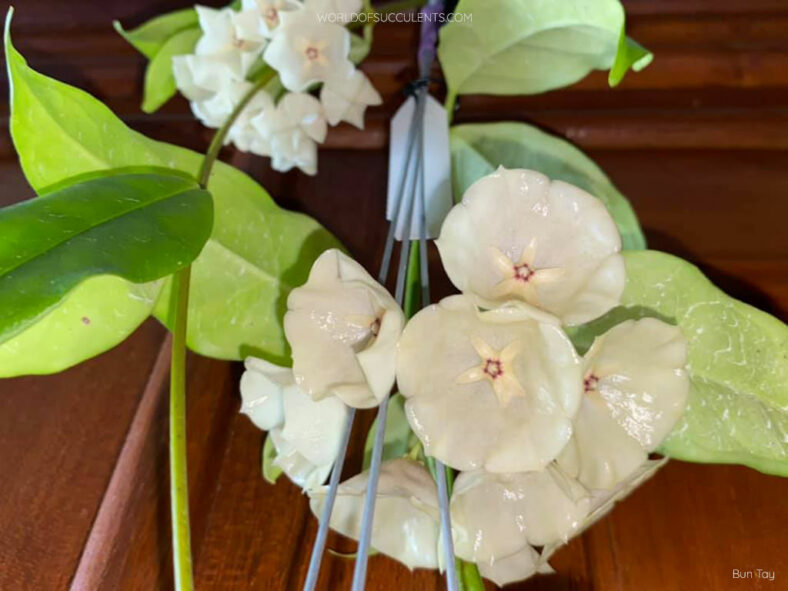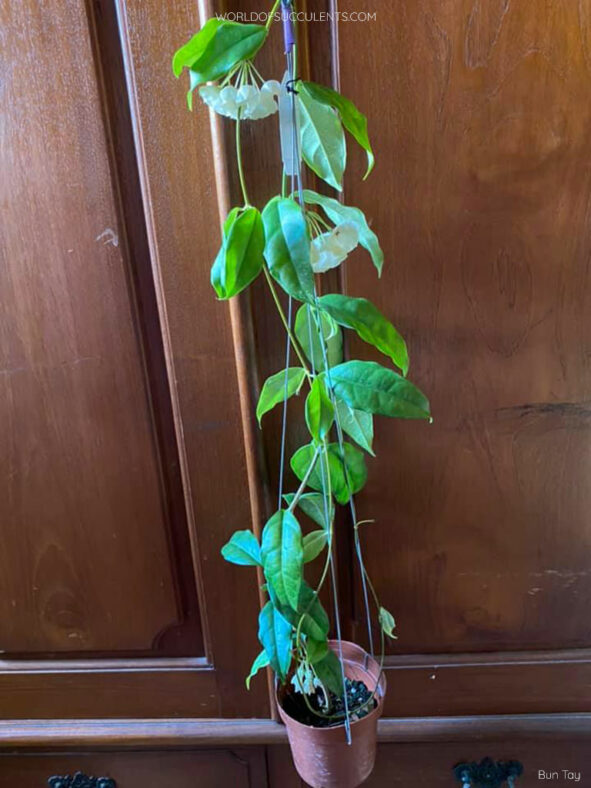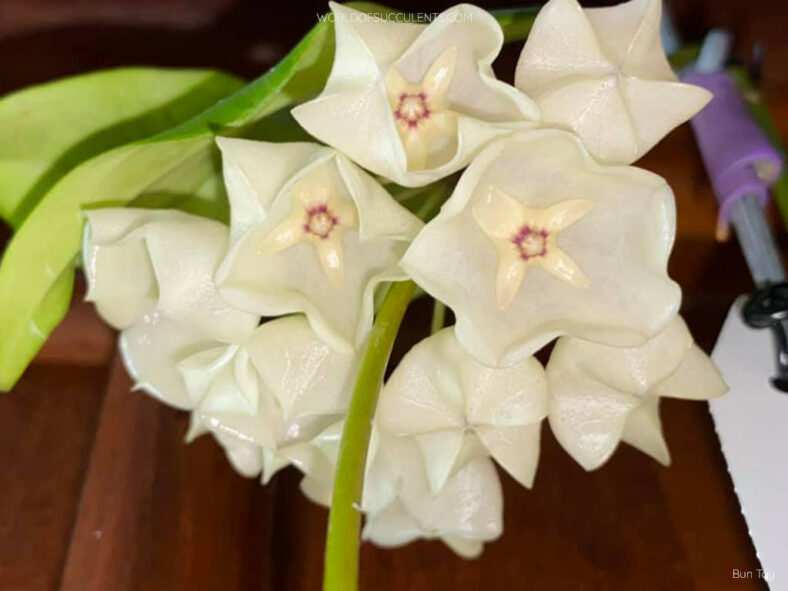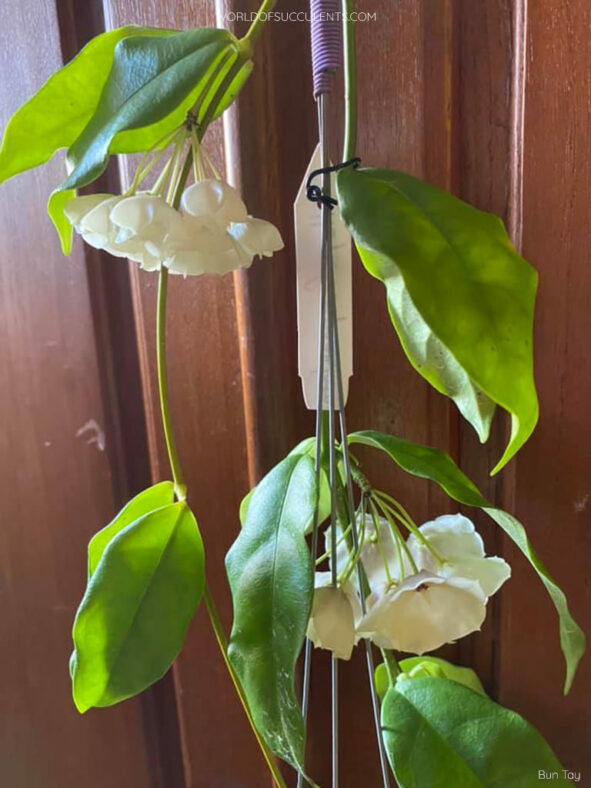If you have enough space and the right conditions for this plant, Hoya campanulata is a must-have addition to your collection! It was first published as Cystidianthus laurifolius in 1849 and has also been in circulation as Hoya cystiantha.
Scientific Name
Hoya campanulata Blume
Synonym(s)
Codonanthus campanulatus, Cystidianthus campanulatus, Physostelma campanulatum, Cystidianthus laurifolius, Hoya cystiantha
Scientific Classification
Family: Apocynaceae
Subfamily: Asclepiadoideae
Tribe: Marsdenieae
Genus: Hoya
Etymology
The specific epithet "campanulata (pronounced kam-pan-yoo-LAH-tuh) means "bell-shaped" and refers to the shape of the flowers.
Origin
Hoya campanulata is native to Southeast Asia. It grows in the tropical low-land forests of Sumatra, Java, the Malay Peninsula, and Borneo.
Description
Hoya campanulata is a non-twining, shrub-like plant with long, slender stems that bear deep green leaves with some flecks and prominent venation. The stems can grow up to 16.4 (5 m) long. The leaves are elliptical, measuring 4.8 inches (12 cm) in length and 2 inches (5 cm) in width.
The impressive flowers appear in clusters of 10 to 15 from spring to summer, producing a discreet citrus scent during the evening. They are bell-shaped with a diameter of up to 1.2 inches (3 cm).
Hoya campanulata is similar to Hoya wallichii but has smaller flowers, bigger leaves, and more compact growth.

How to Grow and Care for Hoya campanulata
Light: Even if this plant can tolerate lower light levels, it may become weak and leggy if the light is too low, producing fewer leaves and flowers. Therefore, keeping it indoors in bright, indirect sunlight is best.
Soil: Well-draining soil that provides excellent aeration and does not hold too much water is most important for growing a healthy plant.
Temperature: Hoya campanulata thrives in hot and humid climates, so keep it away from drafty windows and doorways during the colder months. It grows best in USDA Plant Hardiness Zones 11a to 11b, with average minimum winter temperatures ranging from 40 to 50 °F (4.4 to 10 °C).
Watering: As this plant is sensitive to overwatering, soak the soil thoroughly during the spring and summer, but allow it to dry out before watering again. Otherwise, you will increase the risk of root rot, and your plant will not be happy. It is relatively dormant during the fall and winter and needs only moderate watering.
Fertilizing: While Hoya campanulata is not a particularly heavy feeder, it can benefit from high-potassium fertilizer at half strength every two weeks during the growing season.
Repotting: As an epiphyte, this plant has shallow root systems and does not require a deep container or need to be repotted frequently. As it prefers to be slightly rootbound, repot it in spring only if it outgrows its container.
Propagation: Although layering is the easiest, using stem cuttings is the most popular method of propagating Hoya campanulata. Using leaf cuttings can be more challenging, while starting it from seeds is the simplest but the most time-consuming method. For best results, take cuttings only when the plant is actively growing and sow the seeds in spring and summer.
Learn more at How to Grow and Care for Hoya.
Toxicity of Hoya campanulata
Hoya campanulata is considered non-toxic, so having it around kids and pets is safe.
Links
- Back to genus Hoya
- Succupedia: Browse succulents by Scientific Name, Common Name, Genus, Family, USDA Hardiness Zone, Origin, or cacti by Genus
Photo Gallery
Click on a photo to see a larger version.


